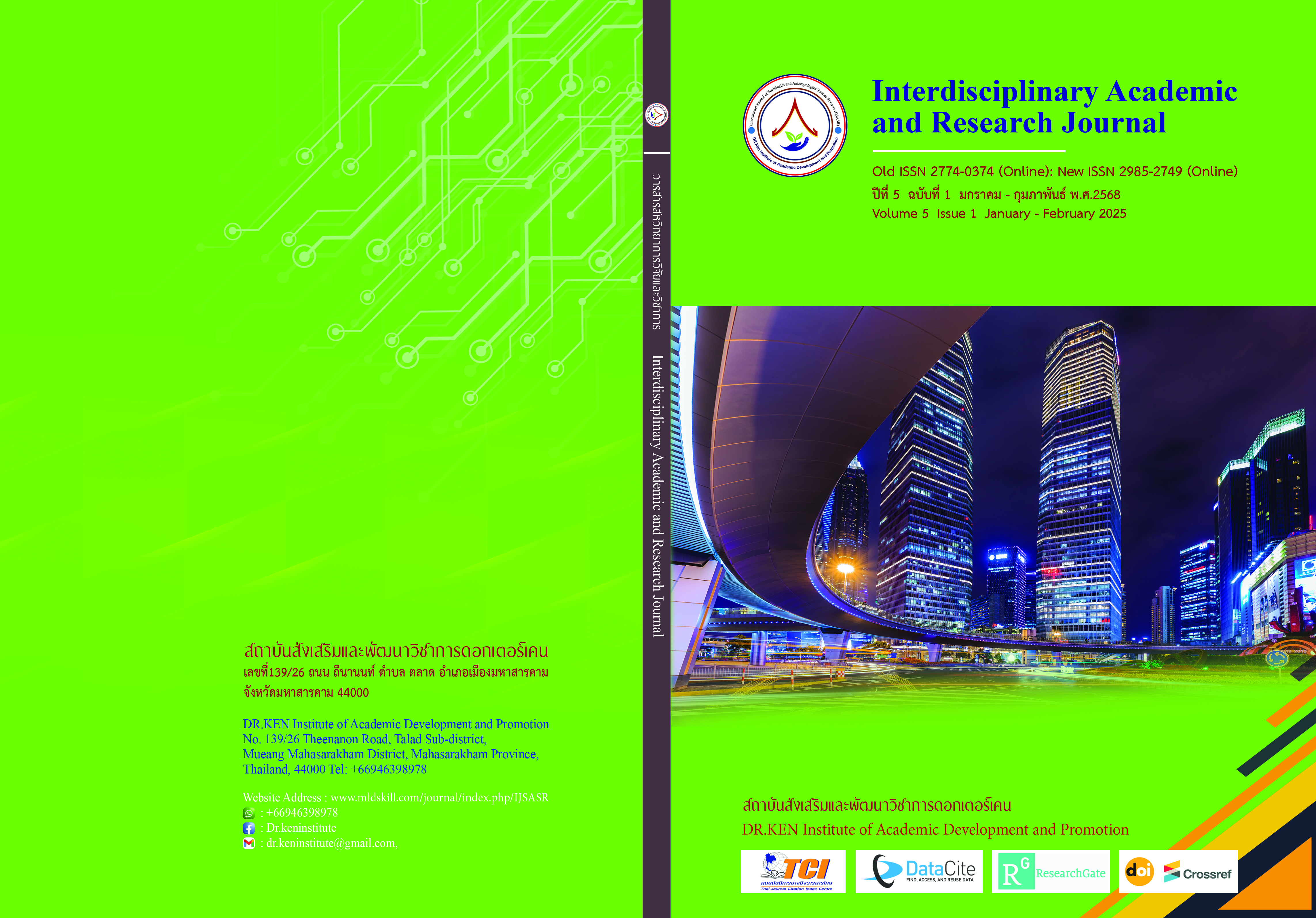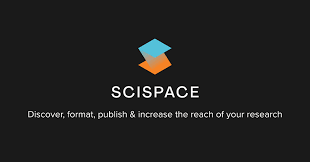The Development of an Instructional Model Based on Design Thinking to Enhance The Innovative Abilities of Undergraduate Students Majoring In Special Education
DOI:
https://doi.org/10.60027/iarj.2025.279041Keywords:
Instructional model, Design thinking, Innovative, Special educationAbstract
Background and Aims: The development of an instructional model based on design thinking focused on learning through design and problem-solving process. The outstanding features of this model were that the students could learn by doing and use their creativity for innovative development. The objectives of this study were: 1. to study the problems and needs for the instructional model to enhance the innovative abilities of undergraduate students majoring in special education, and 2. to develop the instructional model based on design thinking to enhance the innovative abilities of undergraduate students majoring in special education.
Methodology: The research methodology was divided into 2 steps. The first step was to study the problems and needs for the instructional model to enhance the innovative abilities of undergraduate students majoring in special education. The target groups were 30 undergraduate students, 5 teachers, 5 teachers and specialists in the field of students with special needs. The second step was to develop the instructional model based on design thinking to enhance the innovative abilities of undergraduate students majoring in special education. The target groups were 5 experts and 20 undergraduate students majoring in special education. The data was analyzed using the mean (M), the standard deviation (SD), and the content analysis.
Results: According to the study of the problems and needs for the instructional model to enhance the innovative abilities of undergraduate students majoring in special education by 30 students, it was found that the expected value was higher than the real value. Moreover, the average mean score was 4.64/4.21 and the standard deviation score was 0.61/1.04. Furthermore, from 5 experts’ assessments of the appropriation of the instructional model based on design thinking to enhance the innovative abilities of undergraduate students majoring in special education, the average mean score was 4.85 and the standard deviation score was 0.36. The level of appropriation was at the highest level. Additionally, 5 experts evaluated the appropriateness of the handout for the instructional model based on design thinking to enhance the innovative abilities of undergraduate students majoring in special education. The average mean score was 4.91 and the standard deviation score was 0.29. The level of appropriation was at the highest level.
Conclusion: The elements of the instructional model based on design thinking to enhance the innovative abilities of undergraduate students majoring in special education consisted of 1) the principles; 2) the objectives; 3) the instructional procedures based on design thinking, which contained 3.1 Consider, 3.2 Idea, 3.3 Prototype, and 3.4 Trial; 4) the support for the media and learning resources; 5) the evaluation and revision; and 6) the role leading to innovative development.
References
กมลวรรณ ตังธนกานนท์ (2563). การวัดและประเมินทักษะการปฏิบัติ. กรุงเทพฯ: สำนักพิมพ์จุฬาลงกรณ์มหาวิทยาลัย
กระทรวงศึกษาธิการ. (2545). พระราชบัญญัติการศึกษาแหงชาติ พุทธศักราช 2542 และ แกไข เพิ่มเติม(ฉบับ ที่ 2) พุทธศักราช 2545. สํานักงานปลัดกระทรวงศึกษาธิการ.
กุลยา ก่อสุวรรณ. (2553). การสอนเด็กที่มีความบกพร่องระดับเล็กน้อย. กรุงเทพ : มหาวิทยาลัยศรีนครินทรวิโรฒ.
ชญาภรณ์ เอกธรรมนางสุทธิ์. (2562). รูปแบบการเรียนการสอนตามแนวคิดการคิดเชิงออกแบบร่วมกับแนวคิดการสะท้อนคิดการปฏิบัติเพื่อส่งเสริมความสามารถ ในการสร้างนวัตกรรมการพยาบาลของนักศึกษาพยาบาล. วารสารวิจัยสุขภาพและการพยาบาล, 36 (2), 1-14.
ทรงศักดิ์ ภูสีอ่อน. (2556). การประยุกต์ใช้ SPSS วิเคราะห์ข้อมูลวิจัย. พิมพ์ครั้งที่6,ตักสิลาการพิมพ์ มหาสารคาม.
ทวี เชื้อสุวรรณทวี. (2562). พิการศึกษาเชิงวิพากษ์และบูรณาการ. กรุงเทพฯ: สำนักพิมพ์จุฬาลงกรณ์มหาวิทยาลัย.
ทิศนา แขมมณี. (2564). ศาสตร์การสอน องค์ความรู้เพื่อการจัดกระบวนการเรียนรู้ที่มีประสิทธิภาพ. กรุงเทพฯ: จุฬาลงกรณ์มหาวิทยาลัย.
เธียรดนัย เสริมบุญไพศาล. (2564). การพัฒนากระบวนการเรียนการสอนตามแนวคิดการวางแผนกล ยุทธ์และการคิดนอกกรอบของนักศึกษาระดับปริญญาตรี. วารสารพัฒนาการเรียนการสอน, 15 (2), 11-30.
ปรัชญนันท์ นิลสุข และปณิตา วรรณพิรุณ. (2556). การจัดการเรียนรู้แบบผสมผสาน : สัดส่วนการผสมผสาน. วารสารพัฒนาเทคนิคศึกษา. 25 (85), 31-36.
ผดุง อารยะวิญญู. (2542). การเรียนร่วมระหว่างเด็กปกติกับเด็กที่มีความต้องการพิเศษ. กรุงเทพ: แว่นแก้ว.
พระราชบัญญัติการจัดการศึกษาสำหรับคนพิการ (ฉบับที่ 2) พุทธศักราช 2556. ราชกิจจานุเบกษา. เล่มที่ 130 ตอนที่ 42 ก วันที่ 17 พฤษภาคม 2556.
มาเรียม นิลพันธุ์. (2558). วิธีวิจัยทางการศึกษา. พิมพ์ครั้งที่ 9. ภาควิชาหลักสูตรและวิธีสอน คณะศึกษาศาสตร์ มหาวิทยาลัยศิลปากร
เมษ์ ศรีพัฒนาสกุล (2561). คู่มือออกแบบชีวิตด้วย Design thinking. กรุงเทพฯ : บุ๊คสเคป.
ยุวดี วิริยยางกูร, วิมล เถาวัลย์ และ ภทรา นาพนัง (2564). การจัดการเรียนรวม. กรุงเทพฯ: สำนักพิมพ์จุฬาลงกรณ์มหาวิทยาลัย.
วัชรพล วิบูลยศริน. (2557). นวัตกรรมและสื่อการเรียนการสอนภาษาไทย. พิมพ์ครั้งที่ 2. กรุงเทพฯ: จุฬาลงกรณ์มหาวิทยาลัย.
ศรียา นิยมธรรม. (2548). เทคโนโลยีสำหรับเด็กที่มีความต้องการพิเศษ1. กรุงเทพฯ : รำไทย เพลส.
ศิริวรรณ วณิชวัฒนวรชัย และมนัสนันท์ น้ำสมบูรณ์. (2564). รูปแบบการพัฒนาสมรรถนะครูด้านการจัดการเรียนรู้และการวิจัยเพื่อส่งเสริมการสร้าง นวัตกรรมการศึกษาของครูโดยใช้กระบวนการคิดเชิงออกแบบในพื้นที่นวัตกรรมการศึกษา จังหวัดกาญจนบุรี. นครปฐม : มหาวิทยาลัยศิลปากร.
ศิริวรรณ วณิชวัฒนวรชัย. (2566). วิธีสอนสมัยใหม่ Modern Teaching Methods. โรงพิมพ์มหาวิทยาลัยศิลปากร.
ศูนย์สร้างสรรค์งานออกแบบ. (2557). Very Intro To Design Thinking. Retrireived from: http://www.cu-tcdc.com/very-intro-to-design-thinking/?lang=TH
สมจิตต์ สินธุชัย (2559).การพัฒนารูปแบบการเรียนการสอนตามแนวคิดการเสริมต่อการเรียนรู้และการสะท้อนคิดการปฏิบัติเพื่อส่งเสริมความสามารถในการตัดสินใจทางคลินิกของนักศึกษาพยาบาล. วิทยานิพนธ์ปริญญาดุษฎีบัณฑิต, จุฬาลงกรณ์มหาวิทยาลัย.
สำนักงานคณะกรรมการพัฒนาการเศรษฐกิจและสังคมแห่งชาติ สำนักนายกรัฐมนตรี. (2565). แผนพัฒนาเศรษฐกิจและสังคมแห่งชาติ ฉบับที่สิบสาม พ.ศ. 2566-2570. กรุงเทพฯ. สำนักงานคณะกรรมการพัฒนาการเศรษฐกิจและสังคมแห่งชาติ.
สุรศักดิ์ ปาเฮ. (2564). หลักการและทฤษฏีการออกแบบการสอน. แพร่ : เมืองแพร่การพิมพ์.
อัฐวุฒิ จ่างวิทยา. (2561). วิวัฒนาการของการคิดเชิงออกแบบ: จากกลยุทธการแก้ปัญหาของภาคธุรกิจสู่องค์ความรู้ในภาควิชาการ และไปสู่การย่อส่วนเพื่อนำไปปฏิบัติจริงในพื้นที่. วารสารมนุษยศาสตร์ สังคมศาสตร์ และศิลปะ, 11 (3), 1944-1957.
Brown, T. (2008). Design Thinking. Harvard Business Review, 86, 84-92. https://www.researchgate.net/publication/5248069_Design_Thinking
Dick, W., & Carey, L. (2009). The systematic design of instruction. Glenview, IL: Scott, Foresman and Company.
Joyce, M., & Weil, E.C. (2009). Models of Teaching. 6th edition, Boston: Allyn and Bacon.
Kruse, K. (2008). Instructional design. Retrieved March 14, 2008, from http://www.cognitivedesignsolutions.com/Instruction/LearningTheory.htm
The Stanford d.school Bootcamp Bootleg (HPI). (2010). An Introduction to Design Thinking. Retrieved November 19, 2020, from https://dschoolold.stanford.edu/sandbox/groups/designresources/wiki/36873/attachments/74b3d/ModeGuideBOOTCAM P2010L.pdf
Trias De Bes, F., & Kotler, P. (2011). Winning At Innovation. Palgrave Macmillan.
UK Design Council. (2017). Designers across disciplines share strikingly similar approaches to the creative process, which we’ve mapped out as ‘the Double Diamond’. Retrieved No vember 19, 2020, from http://www.designcouncil.org.uk/news-opinion/design-pro cess-what-double-diamond
Downloads
Published
How to Cite
Issue
Section
License
Copyright (c) 2025 Interdisciplinary Academic and Research Journal

This work is licensed under a Creative Commons Attribution-NonCommercial-NoDerivatives 4.0 International License.
Copyright on any article in the Interdisciplinary Academic and Research Journal is retained by the author(s) under the under the Creative Commons Attribution-NonCommercial-NoDerivatives 4.0 International License. Permission to use text, content, images, etc. of publication. Any user to read, download, copy, distribute, print, search, or link to the full texts of articles, crawl them for indexing, pass them as data to software, or use them for any other lawful purpose. But do not use it for commercial use or with the intent to benefit any business.
















.png)


